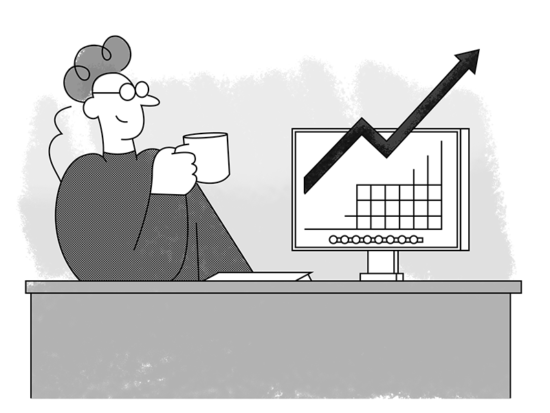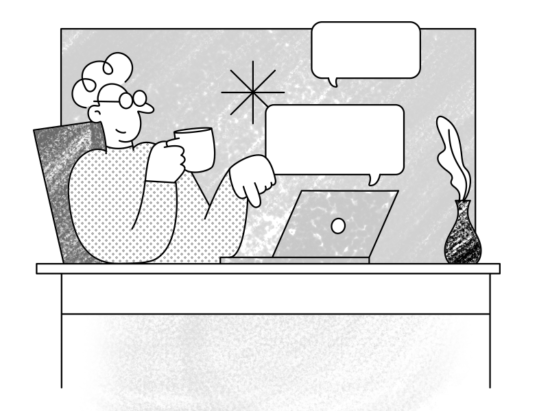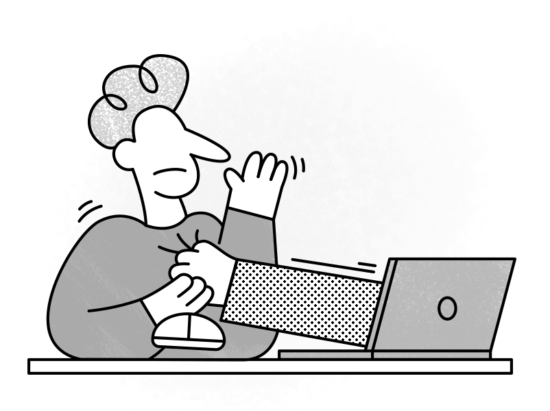Greetings, dear reader! The end of the year is slowly coming to an end and with it our series How to Get Your Business Started. We can proudly say you are officially reading the eighth and the last article in this series! For the grand finale, we prepared a few tips that can help you choose the right premium WordPress theme for your business website. If you are interested to find out how to do so, just keep on reading!
If you have come this far in the process of starting your business, let us, firstly, congratulate you.
You have made some serious steps toward officially becoming an entrepreneur!
By now, we can positively say that your idea developing period is slowly coming to an end, and you are starting to feel ready and confident to put it on the market and start testing it.
During this whole process, as always, Themes Kingdom team has had your back and we can honestly say we are rooting for you. That is why we want only what’s best for you ー to raise your chances of succeeding in the market. We want you to TKO your competitors and make a name of yourself/your brand. That is why we decided it’s time to help you choose the right premium WordPress theme that will blow your visitors’ minds and make your competitors jealous.
Without further ado, let’s get right into it!
Note: If you are not sure why we are suggesting you should pick a premium WordPress theme instead of a free one, check out one of our previous articles on how to create a website from scratch using WordPress. In this article, we explained several issues that come with choosing a free WordPress theme and why it is not the best option for your future business.
Tip 1: Think about what you are trying to achieve
Whether you are trying to build an e-commerce site or a lifestyle blog, your site has to have a purpose.
So, the first thing you have to do is ask yourself: What is the goal of my website?
Is it to sell cookies, handmade bracelets or photographs? Or maybe to make money through some affiliate programs as a fashion blogger? In short, you need to think about the one element that is going to generate the profit.
By doing this step, you are slowly starting to think about the design of your website.
So, if you need to sell a bunch of products, you need a page that can easily display dozens of your products. If you are a blogger on the rise, perhaps, you’ll be more interested in having a blog that will feature all your posts with a clean comment section. Different industries need different features.
So, yeah, there are many elements to web design you need to think about when you are looking to choose the right premium WordPress theme. Which leads us to our next tip.
Tip 2: Check your competitors’ sites
Let’s face it ー you are probably not a (web) designer yourself. That is why, even when you know the purpose of your website, you are going to have a hard time deciding which elements you should include in your website. How the hell are you going to tell what a proper contact form looks like? Or header and footer? Or any site element, for that matter?
As you might have suspected, tip no. 1 can only help you choose the form of your future website ー e-commerce, portfolio, blog theme, etc. This is the reason why you need to check what your competition site is looking like. Get inspired! Check their websites and see what you like and don’t like.
When it comes to your site’s design, we have just one more tip: don’t get caught up in how competitors’ websites look. The chances are they probably had the budget for hiring a professional or a web development agency to do it. The main reason why you should check competitors’ sites is to get ideas on features you would like to include. So, please don’t start comparing your resources to theirs and get bummed out.
Tip 3: Check the vendor before buying a theme
So, you want to find and choose the right premium WordPress theme for your site.
The first thing you’ll, most likely, do is type in the search bar this term and wait for the results to load.
After you googled “premium wordpress themes”, you’ll see that there are over 90 million results, which is, you’ll admit it, a lot. Who has the time to go through all these results?!
To help you find your way in all these results, look for reviews before buying a theme.
What should you check?
First, check their social media accounts and site comments. By doing so, you can quickly dig out some dirt.
Second, check for themes’ reviews on Google. When it comes to this part, be aware that no theme is perfect and that there are going to be mixed reviews.
What should you pay attention to when checking themes’ reviews? Well, we named all the necessary features a theme (and a theme vendor) should have, starting from tip no. 4. But, since there is no such thing as the perfect premium WordPress theme, you need to compromise. What’s more important to you 一 the price or the features? In the end, it all comes down to where you are going to draw the line.
Third, be sure to click on the button often referred to as “demo”. A demo of a theme, as you might know, should portray how a theme performs. By viewing a theme this way, you can get the idea which parts of it you would like to change and how you would do it.
So, when it comes to buying a premium WordPress theme, be sure to listen to Miss Gertrude Stein’s advice ー “Whoever said money can’t buy happiness simply didn’t know where to go shopping.” It’s all about finding the place you can shop at.
Tip 4: Check the support system
Checking how efficient a vendor’s support system is pretty easy. All you need to do is send the company an email and see how quickly it takes the support team to respond. If it takes the team too long to respond move onto another vendor.
Tip 5: Don’t choose a feature-filled premium WordPress theme
Although it might seem like a good idea to choose the one theme that will offer you sooo many features and which will make your website look “cool”, a theme that is cluttered with options is never the right choice. Here’s why.
A WordPress theme that is packed with features and plugins tends to perform slower. Not to mention, these features can ruin the visual appearance of the website. So, if you find a theme that has a lot of widgets and plugins, it’s crucial that you check theme’s demo to see how long it takes to load and how other parts of the website perform.
Tip 6: Check page loading time
While we are on the topic of performance, it’s definitely worth mentioning the page loading time.
This term, as the name implies, represents the time it takes your website to load. It is one of the parameters Google uses to rank websites and, therefore, is one of the most prominent factors you need to bear in mind when you want to choose the right premium WordPress theme.
Why is Google taking into account this parameter? The reason is simple ー Google wants to offer the best user experience to website visitors and when a page doesn’t load fast user experience is ruined.
So, is there a recommended average load time? As Google states, your site should load under three seconds.
Now, if you think that this number is pretty hard to reach, you are not wrong. In fact, there is a post on Machmetrics.com which can prove it. As you will be able to see, the average page loading time depends on the industry ー it varies between eight and ten seconds, which is almost three times higher than the recommended value.
So, what can you do to ensure that your site loads fast? After buying the theme, be sure to check these two things:
- check the demo to see whether it loads quickly or not,
- use Google’s PageSpeed Insights tool.
If you end up not liking how your website performs, you can, in most cases, “return” the theme and get your money back, since most of the vendors have a money-back guarantee (which is another feature you should pay attention to).
Tip 7: Pick a theme that is responsive
In this step, you have to think about your site’s visitors. Sure, you made a profile of your audience (or a profile of your “buyer persona”), but you have to think what they use to come to your website. Some users are probably going to view your site on their smartphones, some of them on tablets and majority on the desktop.
That is why you need to have an optimized site for several types of devices. That is what being responsive is all about. So, when you are looking for a premium WordPress theme, be sure to pay attention if the vendor mentioned responsiveness.
Additional tip: Keep in mind that having a mobile-friendly design is not the same as having a responsive one. When your site is mobile-friendly, it means that the server is delivering optimized pages that are going to appear smaller and be functional. A responsive website is the one that completely adjusts to the user’s needs and devices. So, for example, if you change the width of your Google Chrome browser, your website should be able to adjust web pages to the new width.
Tip 8: The theme must be SEO-ready
If you remember from our WordPress vs. Joomla vs. Drupal article, choosing an SEO-friendly content management system (or in this case, a theme) really does make a difference to your website. By taking into account the principles of SEO, you are making the first step to driving visitors to your site entirely organically, no investments needed.
SEO plays a significant part in web design and online marketing (if you remember “the old days”, we wrote about SEO and its role for e-commerce websites). However, it is an enormous section of online marketing that we cannot explain in just a few paragraphs. So, if you want to pick an SEO-friendly WordPress theme, we would advise you to check Designwall.com’s article.
Tip 9: Check the theme in all browsers
Isn’t this tip an obvious one?
Your site needs to work on several browsers and this feature is mandatory. So, to test it, download the most commonly used browsers like Internet Explorer, Google Chrome, and Mozilla and check it.
Tip 10: Play with colors
Ah, colors.
The first thing your visitors see when they come to your website.
The first thing they pay attention to.
The one design element that stays carved in users minds. Forever.
Did you know that people make a subconscious judgment about the product (and a website is a product!) within 90 seconds of viewing and majority of that assessment is based on color alone?
Sounds terrifying? It should.
Choosing the colors of your website is a serious business.
So, how can you minimize the risk of choosing the wrong colors? Well, the logical thing to do is to select the theme with the color scheme that suits your preferences and brand’s needs the best.
The best tip we can give you is to use a template theme as a guide. Pay attention to where the creators put darker and lighter shades. Let the premium WordPress theme guide you through this whole process.
Colors and logo
If we had to mention one rule, you must follow when choosing colors for your website, that would be to adjust it accordingly to the color of your logo.
Now, creating a logo is altogether another story. If you are interested in reading how you can make your own logo from scratch, be sure to check out this post.
Light vs. dark colors
If you want to change the look of your theme completely, you have all the freedom in the world. You can switch from a darker template to a lighter one or vice versa.
So, should you stick to the bright colors that won’t poke a visitor in the eye or, perhaps, go with something inkier, poorly-lighted?
When it comes to this matter, most of the answers are pro-white. Not to mention, studies have shown that people respond better to lighter design than the darker one.
But, why are dark colors so stigmatized? The psychology behind colors is the one to blame. Black stands for sophistication and glamour which is why it is used by some major, prestige companies like Apple, for example. In spite all these “glamour”, black color portrays menace or oppression. An oppose to that, lighter themes give the impression of openness and flexibility.
Having all this in mind, remember that there are no rules. Some say that darker themes are great for fashion blogs or photography portfolios, but there is really no strict definition of what you should choose. If you need help with selecting the right color schemes, be sure to check an article on Websitebuilderexpert.com.
Tip 11: Easy to read font
You know what is the one reason why you should definitely choose a premium WordPress theme? The fact that this type of themes are usually, or at least in most cases, well-designed. This only means that the typography flawlessly blends in the design. Designers behind these themes usually poured their blood, sweat, and tears to make sure that all the elements of design came together.
So, why is typography that significant? The reason is quite simple 一 the words on your website and the font you used to write them matter because they are the reason people came to your site in the first place. Remember that your visitors, future consumers, either want to find information about your company or are interested in reading your content. That is why you need to make the reading process easy, and, more importantly, memorable.
Unlike the website copy, typography is a visual element of web design and, if it’s good, it has the ability to switched visitors’ focus from the text itself to the overall impression of your site. This is why website copy and typography have to be well-combined to compliment your business. In fact, colors, fonts, and text on a website must all come together so that the visitors, your future consumers, can make a distinction between you and your competitors in their minds.
Tip 12: Seek for the one that’s multilingual-ready
If you target more than one markets, not just the English-based, it is completely understandable that you need multiple translations. In fact, Buildwith.com mentioned there are over 450,000 sites use the WordPress Multilingual Plugin (a plugin for building multi-language sites), and over 700,000 websites have used this plugin historically.
It all depends what your target market is. If you are trying to push your brand to foreign countries, be sure to prepare the translations.
Note: Themes Kingdom team decided to make it a bit easier to include translation to your site. All you need to do is give us the translation, and we’ll add it to your website.
Tip 13: Decide on how much you are willing to pay
In the end, after all the mentioned tips, there is one more factor you need to bear in mind ー how much you are willing to invest in a WordPress theme.
So, how much should you pay for a pre-designed distributed theme? We are not going to be the judge of that. Let’s check the stats.
First of all, depending on the company, there are different types of pricing models. Most of the companies, however, offer a 1-year membership and a “lifetime” membership or lifetime access to their themes. But, to really see how the prices go, Codeinwp.com did a research and found that the average price for a 1-year subscription was $145. Additionally, the average price of a lifetime subscription was $249.
Do we really have to mention that this is the first time the Themes Kingdom team is proud to be below the average (when it comes pricing)? 🙂
Additionally, the median price of themes the author of the article could find was around $59.
So, in your opinion, are the prices too high? We believe they are not, but it all depends on what you are getting for that price. So, always look for a credible vendor that is able to offer you a full package ー responsive, SEO-friendly theme that’s well-designed, easily customizable and works well in several different browsers.
Tip 14: Still not sure? Check the theme thoroughly
Even after all these tips, you are still not sure whether a theme is the right one for you? Scan it!
As we mentioned before, when you are buying a premium WordPress theme there is usually some return policy if you are not satisfied with the product. Most likely, it’s in the form of a money-back guarantee. Use this feature, wisely!
In that guarantee period, you can test the theme and check if it really matches standards of a proper WordPress theme. To do so, you use the Theme Check plugin. If, for some reason, you trust more a third-party tool rather than a WordPress plugin, check Themecheck.info.
So, what will you be able to check with these tools? Two answers: code quality and the presence of malware. If you notice anything wrong with these two parameters, “return” the theme immediately!
Why do all good things must come to an end?
And that’s it! These are all the tips we had to share when it comes to choosing the right premium WordPress theme for your business website.
As we mentioned in the beginning, this is also the end of our series How to Get Your Business Started. It’s been a good ride, hasn’t it?
But, don’t you worry! We have prepared some fantastic articles that are practical and just as helpful as the previous ones, so make sure to stay tuned.
Now, it’s up to you! What was the most valuable thing you learned in this journey? Share it with other readers in the comment section, down below.




3 thoughts on “ Choose the right premium WordPress theme and TKO your competitors ”